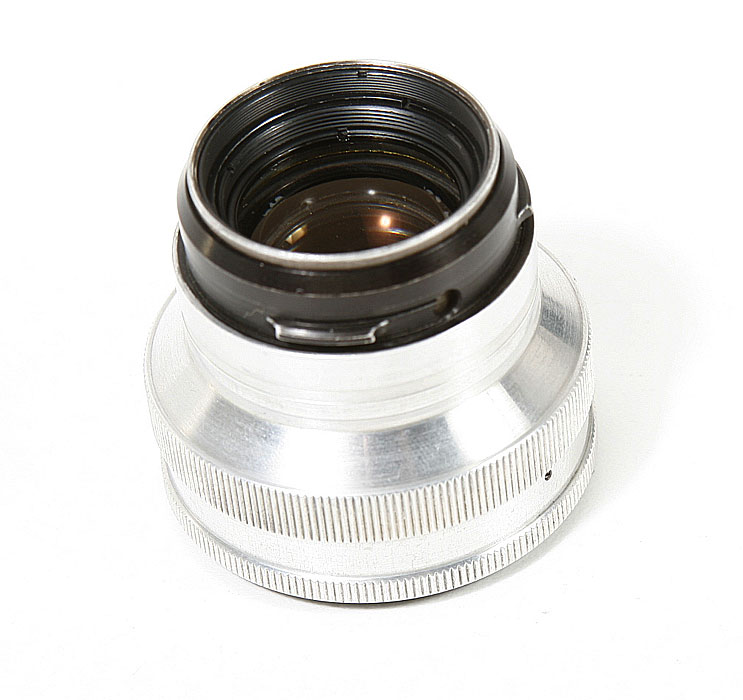
Photographica Pages
An online guide to collectable cameras and related stuff
50/2 Zeiss Sonnar for Contax
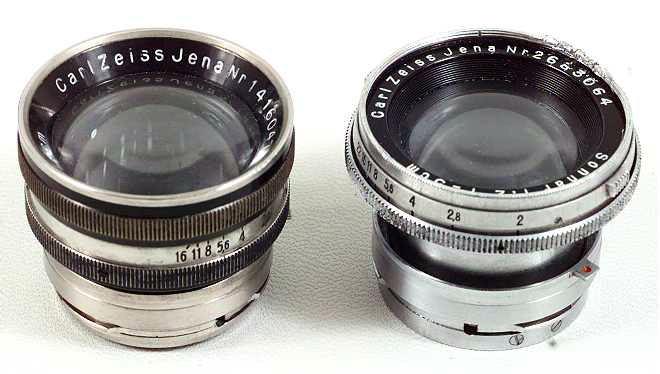
A black and nickel (Type 2) 50/2 Sonnar in Contax mount, left, and a collapsible version in chrome.
When the Contax was introduced in 1932, the fastest lens that Leitz had avaialbe for the Leica was the
50/2.5 Hektor. The 50/2 Zeiss Sonnar was faster, and wasn't even the fastest lens that Zeiss was
offering. It was designed by Dr Ludwig Bertele using six elements in three groups to keep the number of
air surfaces to six. This helped maintain contrast in an uncoated lens. Optically this lens was
reformulated many times to take advantage of new optical glass as they were developed.

A black and nickel (Type 2) 50/2 Sonnar in Contax mount, left, and a collapsible version in chrome.
Initially the lens was offered in a black paint barrel with a nickel apertrue ring in the middle of the barrel, and a nickled front rim. It took 37mm slip on filters, or with a slip on adapter 1314/17 it could take 42mm slip on accessories. The minimum f/stop was f/22.
The second version of this lens uses 42mm slip on accessories, and the rear element has a 19mm diameter. Numbers ranged from roughly 1416xxx to 1429xxx. One batch in this version, with numbers 1421600-1422200 only stop down to f/16.
The next version is from 1933, and is the same as the previous version except the rear element is
larger, measuring 23mm across.
Also in 1935 was the first version of the chrome over brass collapsibe lens. The chrome finish matched
the Contax II which was slated for release, and the collapsible design, couple to the sleek new style of
the Contax II made it a more compact and pocketable camera than the Contax I, mor ein line with the
elegent Leicas. And yet it was fast and sharp.This is the easiest version to be found.
A batch of nickel plated rigid lenses were also produced in 1935 without the black painted ring.
In 1936 a chrome rigid lens was produced like the nickel lens from 1935, which is the same barrel as
the current 50/1.5 Sonnar. Also in 1936 a small batch of odd collapsible lenses were built with thicker
lens heads and the beauty ring was angled like the rigid lenses rather than flat like the collapsible
lenses.
In 1937 the aperture ring was made a little bigger, which made index marks under the aperture
numbers easier to see.
Lenses that were T coated started appearing in 1938, somewhere around 2555xxx. Possibly they did
some batches to see how well they fared in the field against the uncoated lenses. It appears that they
didn't start coating all of the 50/2 lenses until the 1941 version.
That version has an aluminum body, most likely due to shortages of raw materials. The first serial
number of this version was likely 2682701.
Another alloy version was produced in 1942-43 with a chrome over brass barrel, aluminum aperture
ring and a dull gray mount.
After the war, produced ws resumed in an aluminum rigid body. It had a seperate filter ring inside the
front rim. Serial numbers are above 3000000.
In 1947 the finish was changed to chrome, and the index mark became a red arrow. And in 1949 a
small batch of somewhere between five and twenty-five lenses were finished in ivory paint for the test
Ivory Jena Contax. The Ivory Contax was never put into serial production.
Some lenses were produced in Jena marked 50mm instear of 5cm. That same year saw the introduction
of the West German lenses from Oberkochen . Thes are rigid chrome over brass lenses. Instead of
being marked as Carl Zeiss Jena, they are identified as Zeiss-Opton. Initially they carried the red T to
indicate they were coated, but later on the T was dropped as all lenses at that oint were being coated.
This version introduced the double diaphragm which had 22 blades.
West German Zeiss won a series of lawsuits over trademarks, and Jena lost the right to use the Zeiss
name. Lenses were then marked just Carl Zeiss, rather than Zeiss-Opton. The filter ring was now
finished in black. Serial numbers star at 1256001.
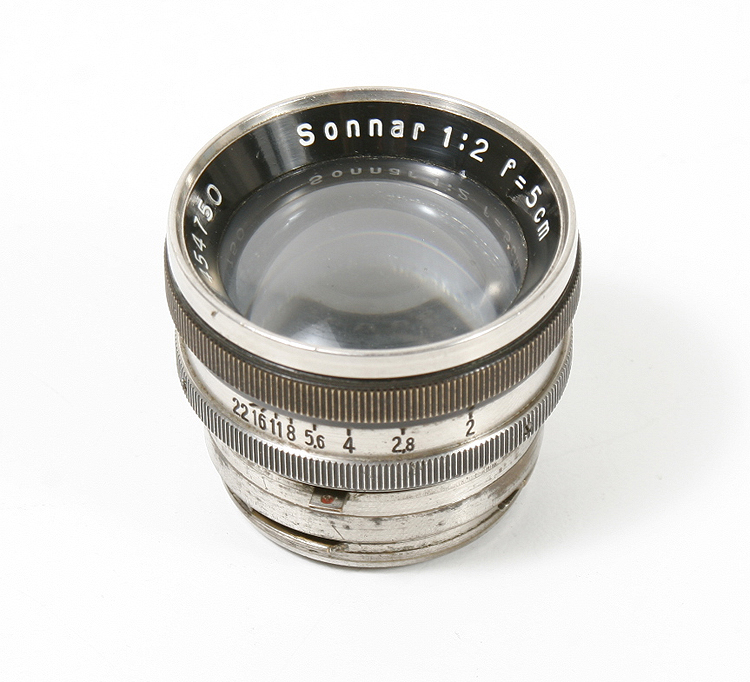
The first version 50/2 chrome Sonnar.
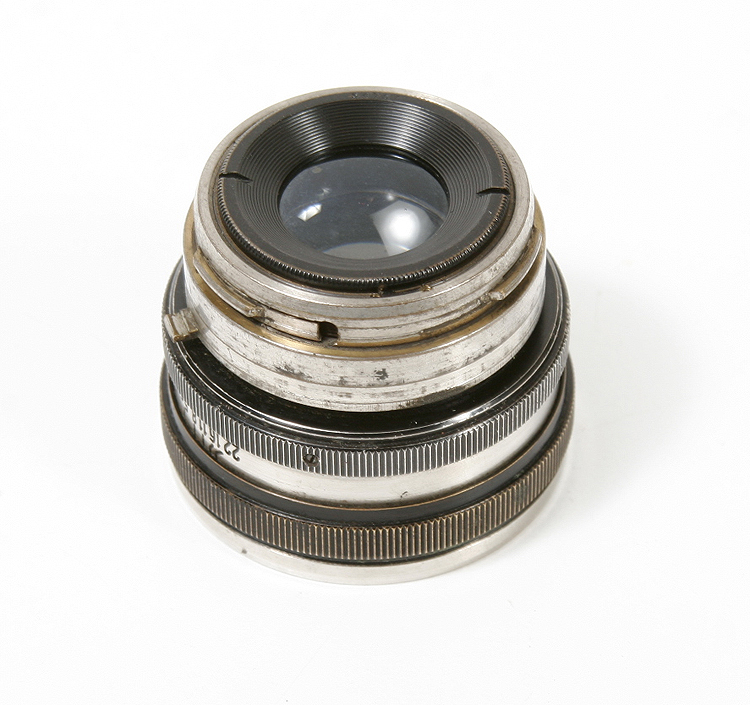
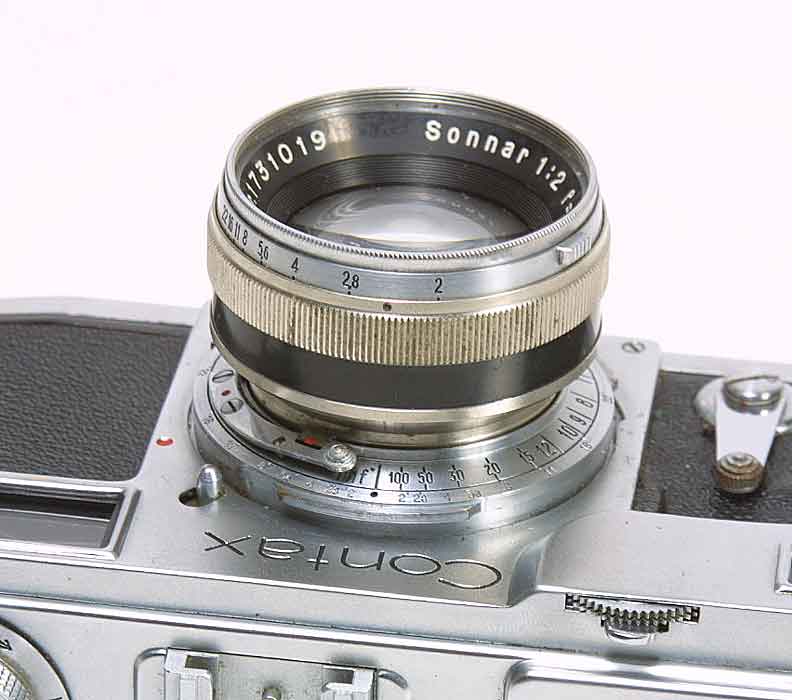
The 1935 black, nickel and chrome 50/2 Sonnar.
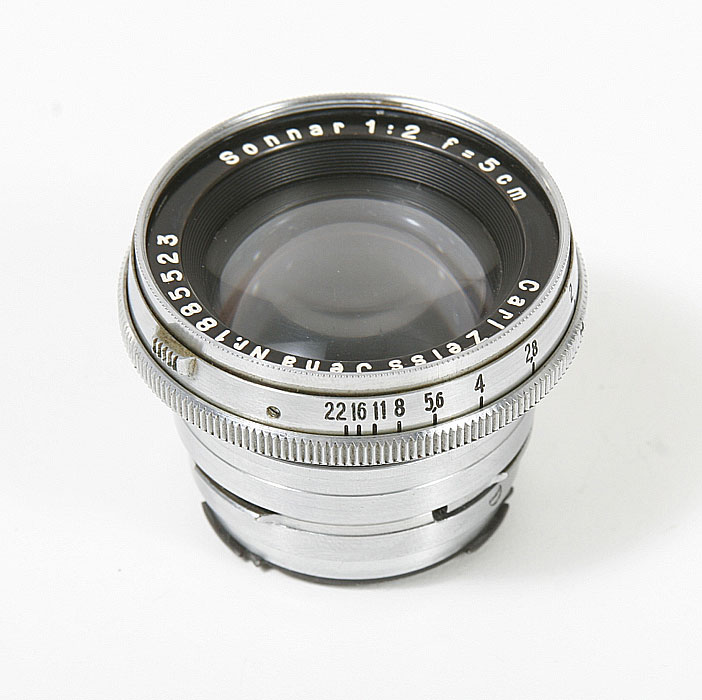
The 50/2 Sonnar collapsible.
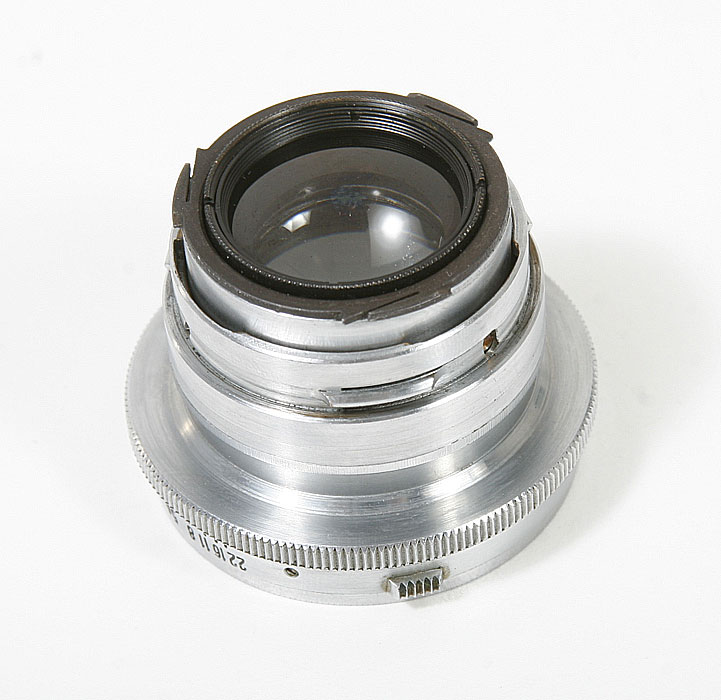

A wartime aluminum lens with military markings.
.
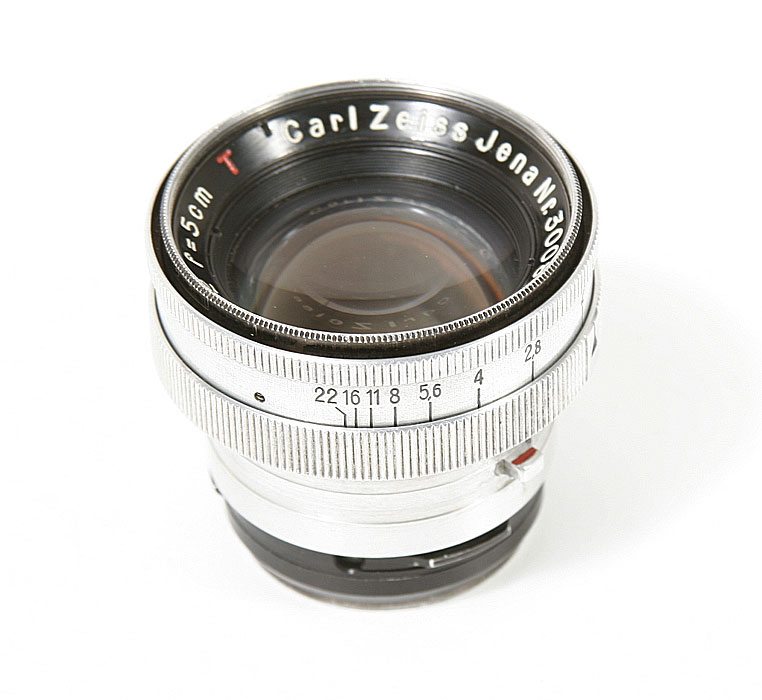
The 1946 version of the Jena lens.
